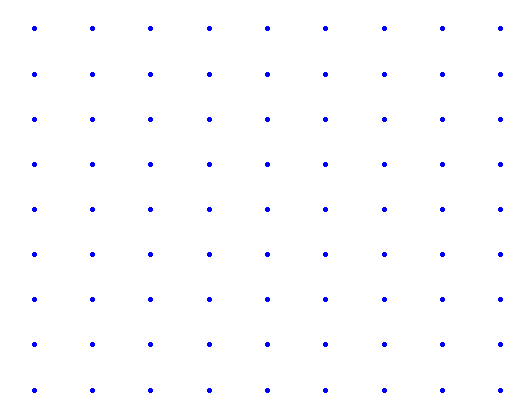-
Posts
5723 -
Joined
-
Days Won
55
Content Type
Profiles
Forums
Events
Everything posted by Genady
-
Makes sense. Chemical camouflage to hide from creatures that sense the world mostly chemically. Visual camouflage to hide from creatures that sense the world mostly visually. Audio camouflage anybody?
-

Concerns about the geometry of the real number line
Genady replied to Boltzmannbrain's topic in Analysis and Calculus
Frankly, I don't know now what topic/concern is/are discussed. Is it something definite? -
Unfortunately, this happens only for short term during psychotic episodes.
-
No, it is more than that. Just look at this book: Modern Classical Physics: Optics, Fluids, Plasmas, Elasticity, Relativity, and Statistical Physics by Kip S. Thorne (Author), Roger D. Blandford (Author) From the book description: This first-year graduate-level text and reference book covers the fundamental concepts and twenty-first-century applications of six major areas of classical physics that every masters- or PhD-level physicist should be exposed to, but often isn't: statistical physics, optics (waves of all sorts), elastodynamics, fluid mechanics, plasma physics, and special and general relativity and cosmology. Growing out of a full-year course that the eminent researchers Kip Thorne and Roger Blandford taught at Caltech for almost three decades, this book is designed to broaden the training of physicists. Its six main topical sections are also designed so they can be used in separate courses, and the book provides an invaluable reference for researchers. Presents all the major fields of classical physics except three prerequisites: classical mechanics, electromagnetism, and elementary thermodynamics
-
I don't think that having relative velocity constitutes a physical interaction. Maybe it does in some sense, but I am not familiar with such sense. In every meaning of physical interaction that I am familiar with, such a relation is excluded. E.g., interacting particles in QFT.
-
-
Imagine points on a plane which are vertices of a square 1x1 grid covering the entire plane. Find a shape with area < 1 such that it cannot be placed on the plane without touching at least one of these points.
-
Yes, they are. But they are not interactions.
-
I don't immediately see it. Could you elaborate?
-
I see independent differences (Dictionary by Merriam-Webster: America's most-trusted online dictionary😞 Socialize Conform
-

Expansion of the universe or contraction of scale?
Genady replied to katahiromz's topic in Relativity
I think there are more things we know for sure, such as patterns of the redshift, CMB radiation and its patterns, gravitational lensing, elements content, evolution of features, etc. -

Concerns about the geometry of the real number line
Genady replied to Boltzmannbrain's topic in Analysis and Calculus
Moreover, we never observe or measure real numbers. Unlike natural numbers - we can count - and rational numbers - we can break things. -
If it was, the question did not mention it. Mathematics answers what has been mentioned in the question.
-
This is what you mean, right?
-
I think it is called mathematics.
-
Thank you. Yes, this is my understanding. Quantum fields represent / fit something out there (reality), like gazelles' legs represent / fit the terrain they live on.
-

Expansion of the universe or contraction of scale?
Genady replied to katahiromz's topic in Relativity
It is proven in GR that homogenous isotropic space is unstable. It has either to expand or to shrink. Which one and for how long, depends on initial conditions. Why the initial conditions, aka Big Bang, were what they were, is unknown. The dark energy is inferred not to explain why space expands, but rather to explain why the expansion accelerates. -
OK, if 'to conform' means 'to socialize' then it perhaps is in human nature. I disagree. From the statement, "for an athiest to not play golf, they first have to be taught what golf is" follows the logical conclusion, "as long as they were not taught what golf is, they play golf". The conclusion is wrong; as this conclusion is a logical consequence of that premise, the premise is wrong. So, in order to not play golf, they don't need to be taught what golf is. They just need not to play it.
-

Expansion of the universe or contraction of scale?
Genady replied to katahiromz's topic in Relativity
The expansion is result of gravity. It appears when the gravity is homogeneous and isotropic. If gravity is, for example, spherically symmetric, like around massive bodies, there is no expansion. -

Expansion of the universe or contraction of scale?
Genady replied to katahiromz's topic in Relativity
No, it doesn't work. The universe expands only on a very large scale, hundreds of millions of parsecs. Solar system, Milky Way, galactic clusters do not expand. The expansion is not a matter of scale, but a matter of physics. -
Yes, but not will. The legacy code issues are almost as old as the programming itself.
-
Well, I know the answer. And I've just checked with ChatGPT, following your suggestion. Turned out that it knows the answer, too. Not too surprising as the answer is about 30 years old. It is a clever answer anyway.
-
Yes, indeed. For that reason, I didn't have a dog until I retired and moved to the island 20 years ago. Dreamed of having a dog all my life, but always lived and worked in big cities... Now the conditions are perfect, for them and for me.
-

Concerns about the geometry of the real number line
Genady replied to Boltzmannbrain's topic in Analysis and Calculus
I just try to replace vague words like "same way", "sort of", "forms" (in parentheses) by clarity. I don't think that vague talk is a fruitful endeavor. But if it is not what you're looking for, then fine. Sorry to say, but your going in circles is getting quite painful. It has been already covered and referred to. See https://www.scienceforums.net/topic/128915-concerns-about-the-geometry-of-the-real-number-line/?do=findComment&comment=1232493 -
I see a relation between models in physics and reality akin the relation between living organisms and environment. Models in physics evolve to fit their domains of reality, like organisms evolve to fit their environment. Models in physics don't reflect or describe the reality, but they represent aspects of reality by being able to successfully work with it. Similarly, organisms don't look like their environment, but they represent aspects of the environment by being able to successfully operate in it.



